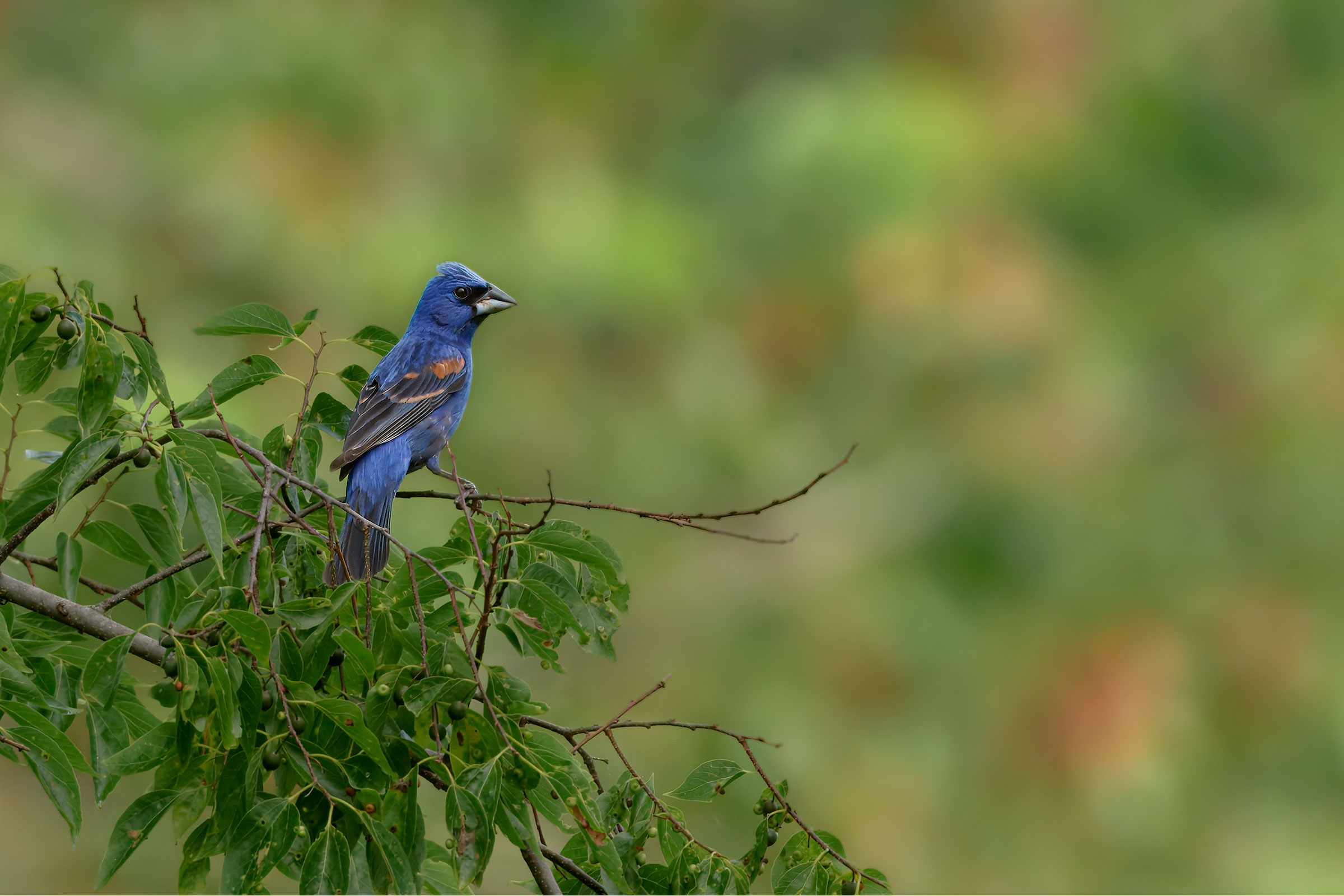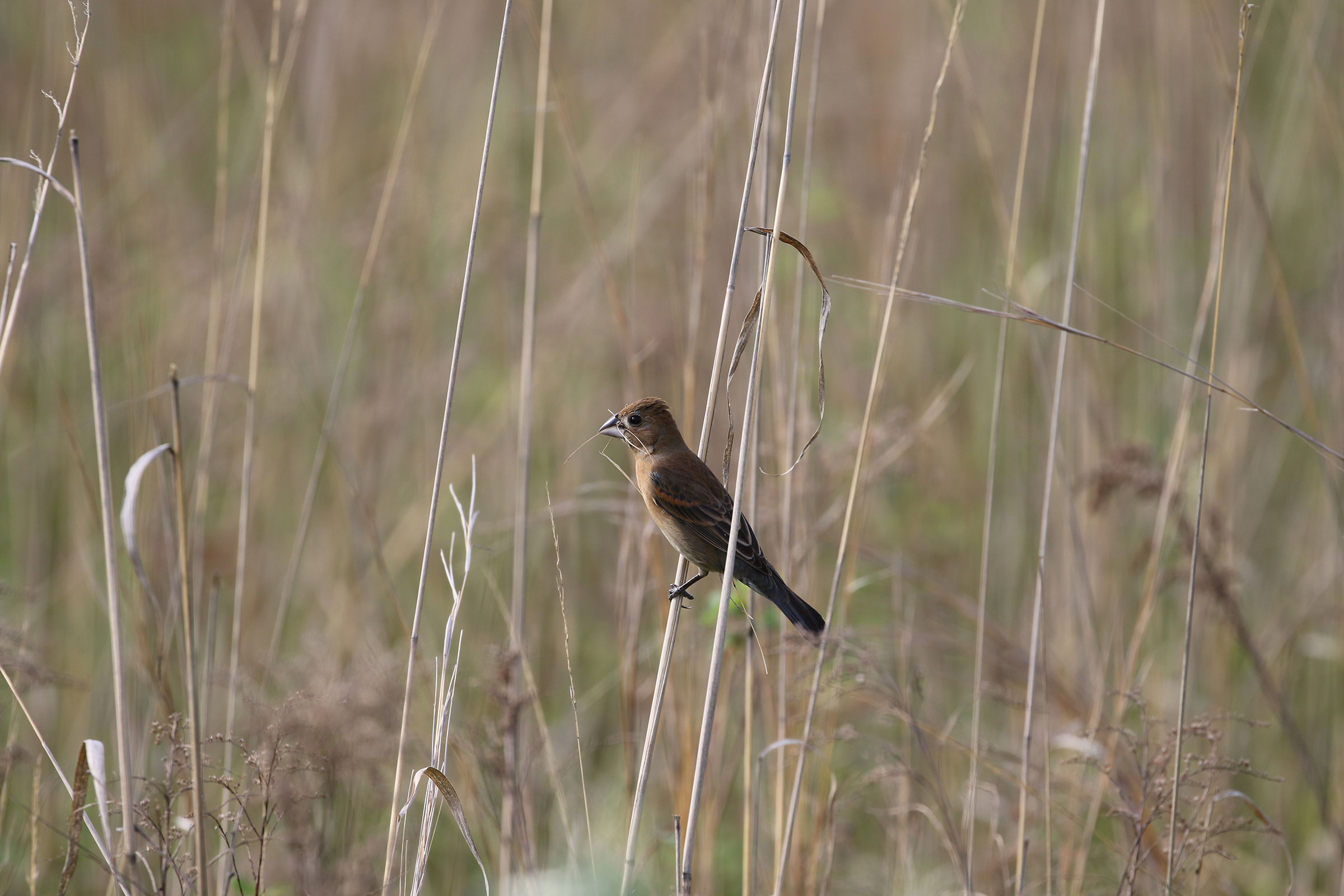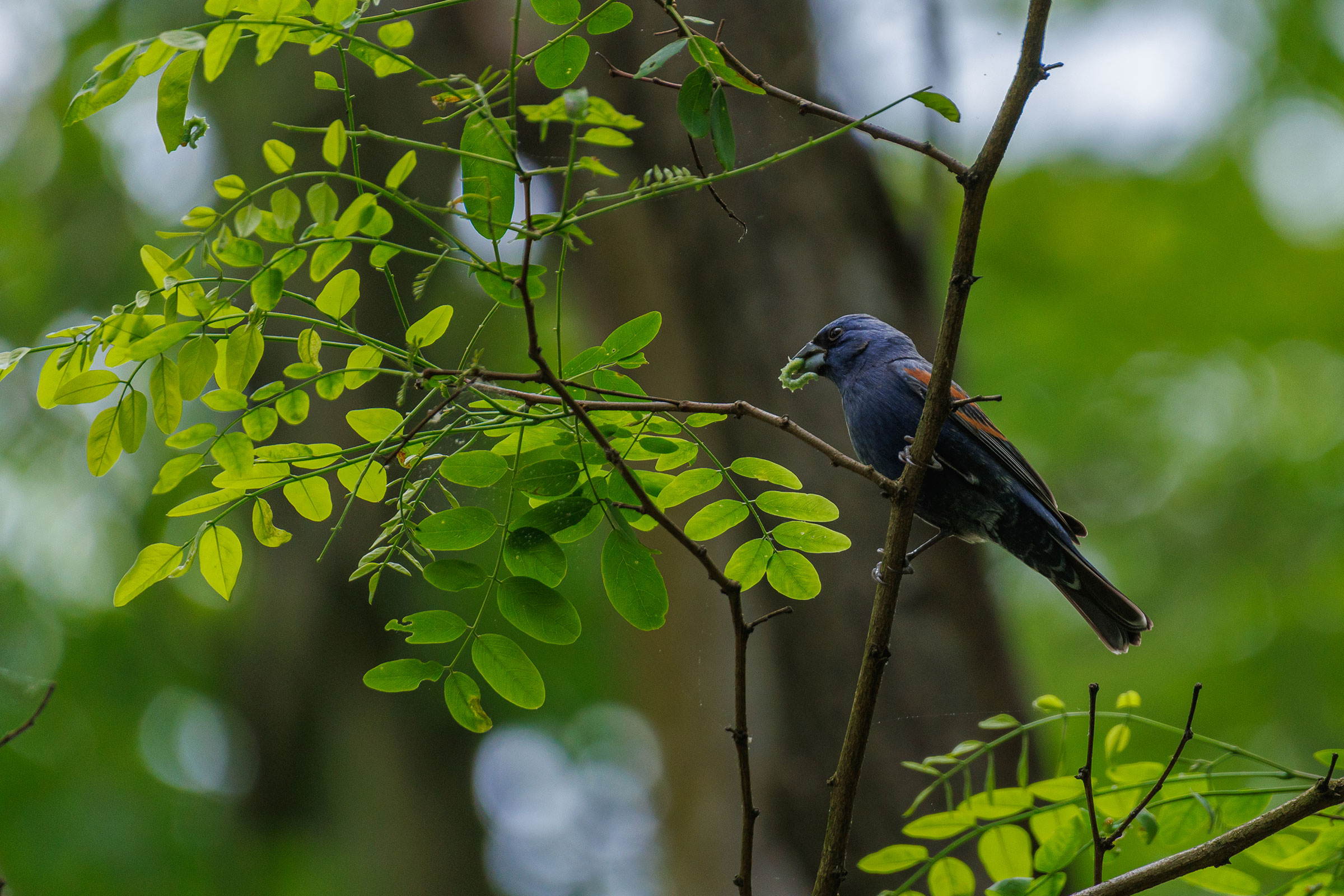Introduction
Along the Atlantic Coast, Virginia is among the northernmost states with breeding Blue Grosbeaks. The bulk of their breeding distribution lies to the south and west of Virginia. These bright blue birds with oversized conical bills breed in shrub habitats, such as old fields, weedy pastures, forest edges, and powerline clearings. They have a high degree of sexual color dimorphism, with males being blue with brown wingbars and females being reddish-orange brown (Lowther and Ingold 2020).
Breeding Distribution
Blue Grosbeaks are found throughout the state; however, they are most likely to occur in the southern Piedmont and Coastal Plain regions. Generally, they are less likely to occur in the Mountains and Valleys region, especially in areas that are heavily forested, or in highly urbanized areas throughout the state (Figure 1). This species prefers broken shrubby habitats, and the likelihood of its occurrence increases in areas with a greater number of habitat types and more shrubland and grassland habitats. In contrast, its likelihood of occurring decreases as the amount of forest cover and developed land increases.
Between Atlas periods (Figures 1 and 2), the Blue Grosbeak’s likelihood of occurring decreased throughout the Mountains and Valleys region, except the most southwestern portion, and in the northern Piedmont (Figure 3). Along some areas of the coastline, the Blue Grosbeak’s predicted occurrence increased. Its predicted occurrence remained constant throughout the remainder of the state.

Figure 1: Blue Grosbeak breeding distribution based on probability of occurrence (Second Atlas, 2016–2020). This map indicates the probability that this species will occur in an Atlas block (an approximately 10 mi2 [26 km2] survey unit) based on environmental (including habitat) factors and after adjusting for the probability of detection (variation in survey effort among blocks).
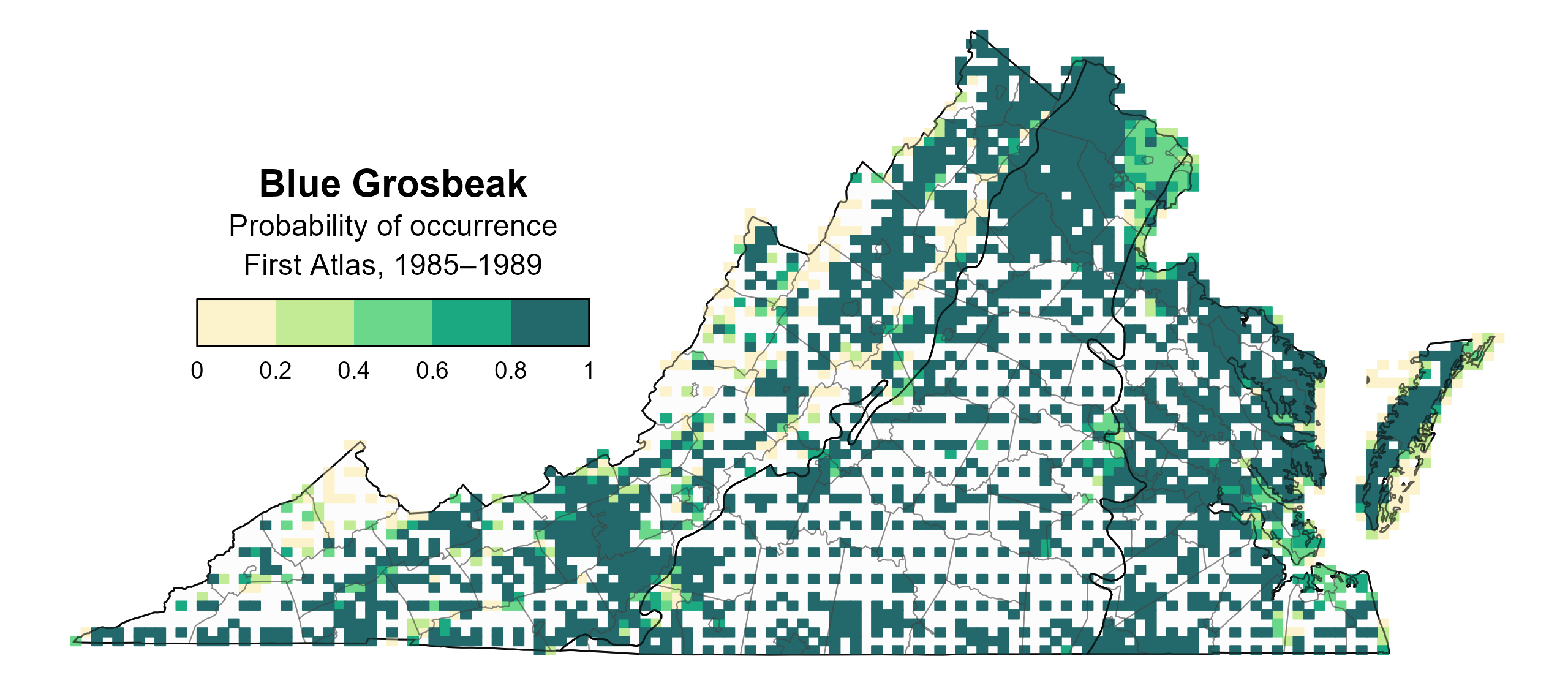
Figure 2: Blue Grosbeak breeding distribution based on probability of occurrence (First Atlas, 1985–1989). This map indicates the probability that this species will occur in an Atlas block (an approximately 10 mi2 [26 km2] survey unit) based on environmental (including habitat) factors and after adjusting for the probability of detection (variation in survey effort among blocks). Blocks in white were not surveyed during the First Atlas and were not modeled.

Figure 3: Blue Grosbeak change in breeding distribution between Atlases (1985–1989 and 2016–2020) based on probability of occurrence. This map indicates the change in the probability that this species will occur in a block (an approximately 10 mi2 [26 km2] survey unit) between Atlas periods. Blocks with no change (tan) may have constant presence or constant absence. Blocks in white were not surveyed during the First Atlas so were not modeled.
Breeding Evidence
Blue Grosbeaks were confirmed breeders in 308 blocks and 89 counties and were found to be probable breeders in an additional 19 counties (Figure 4). Breeding observations were recorded throughout the state, but they were more scattered in the heavily forested Mountains and Valley region. During the First Atlas, breeding evidence was also recorded in all regions of the state (Figure 5).
Breeding was first confirmed when adults were observed carrying nesting material in early May. The primary breeding behaviors observed were adults carrying food (May 20 – August 21), recently fledged young (May 31 – September 4), and adults feeding young (May 27 – August 23) (Figure 6).
For more general information on the breeding habits of this species, please refer to All About Birds.
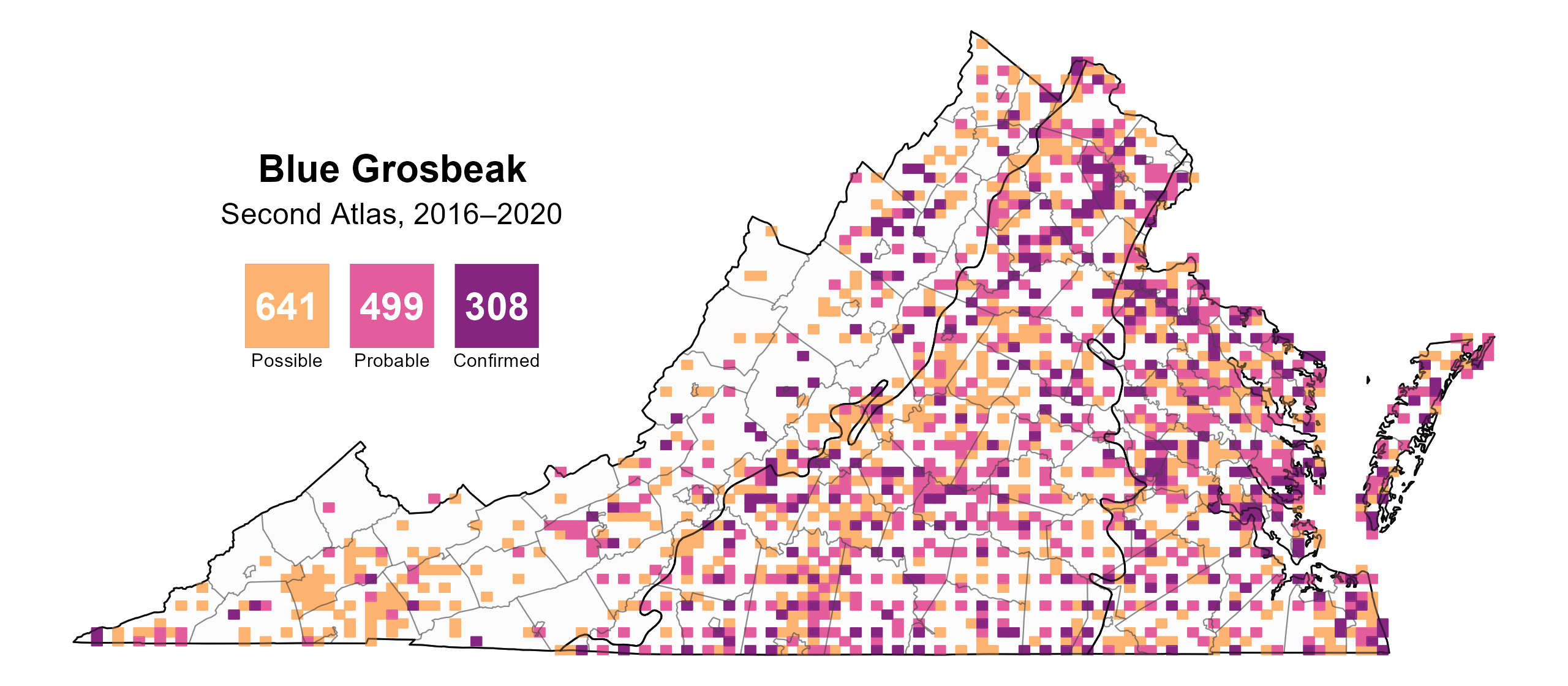
Figure 4: Blue Grosbeak breeding observations from the Second Atlas (2016–2020). The colored boxes illustrate Atlas blocks (approximately 10 mi2 [26 km2] survey units) where the species was detected. The colors show the highest breeding category recorded in a block. The numbers within the colors in the legend correspond to the number of blocks with that breeding evidence category.

Figure 5: Blue Grosbeak breeding observations from the First Atlas (1985–1989). The colored boxes illustrate Atlas blocks (approximately 10 mi2 [26 km2] survey units) where the species was detected. The colors show the highest breeding category recorded in a block. The numbers within the colors in the legend correspond to the number of blocks with that breeding evidence category.

Figure 6: Blue Grosbeak phenology: confirmed breeding codes. This graph shows a timeline of confirmed breeding behaviors. Tick marks represent individual observations of the behavior.
Population Status
Blue Grosbeak relative abundance showed a strong east to west pattern, with the highest abundance levels estimated for the Coastal Plain region, moderate levels estimated for the Piedmont region, and low levels estimated for the Mountains and Valleys region (Figure 7).
The total estimated Blue Grosbeak population in the state is approximately 454,000 individuals (with a range between 326,000 and 639,000). Based on the North American Breeding Bird Survey (BBS), the Blue Grosbeak population increased by a significant 1.04% annually from 1966–2022 in Virginia, and between Atlas periods, Blue Grosbeaks showed a nonsignificant increase of 0.05% per year from 1987–2018 (Hostetler et al. 2023; Figure 8).
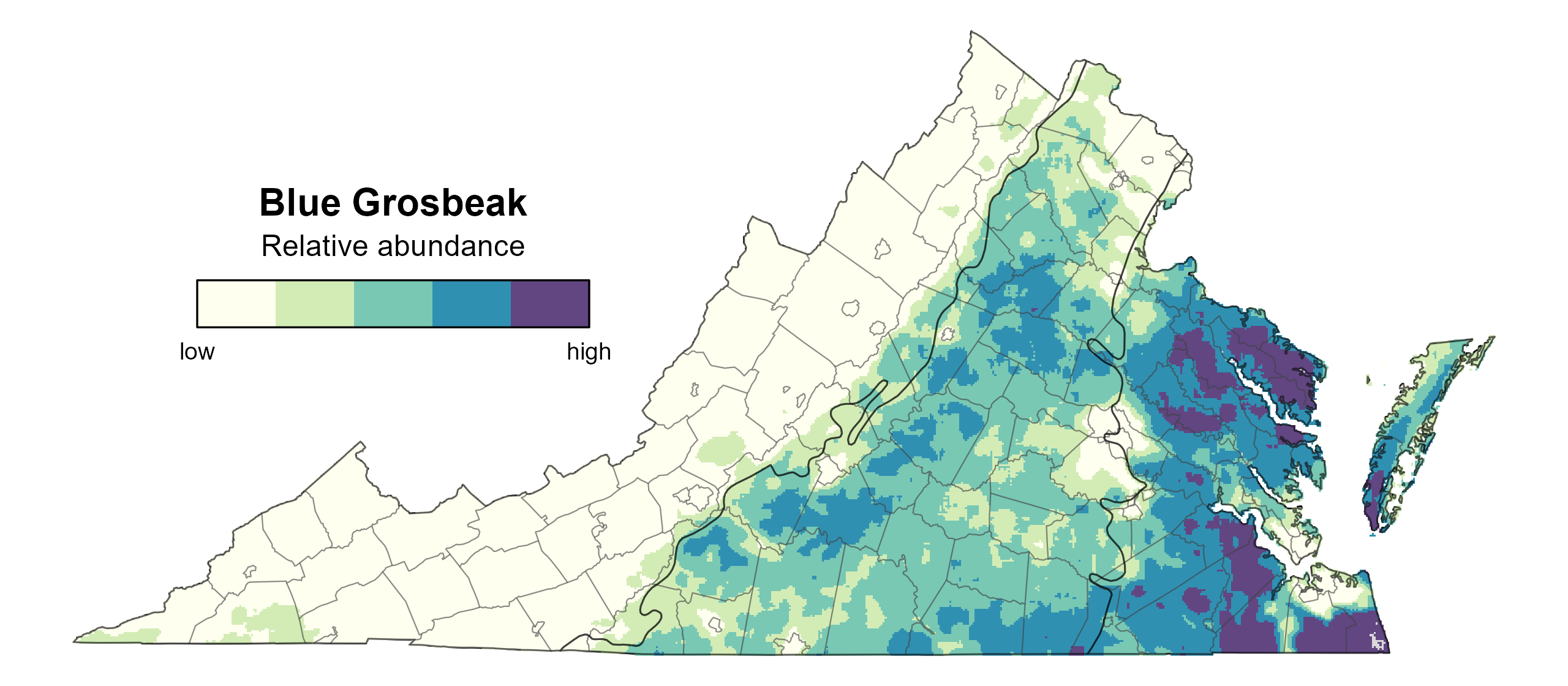
Figure 7: Blue Grosbeak relative abundance (Second Atlas, 2016–2020). This map indicates the predicted abundance of this species at a 0.4 mi2 (1 km2) scale based on environmental (including habitat) factors. Abundance values are presented on a relative scale of low to high.
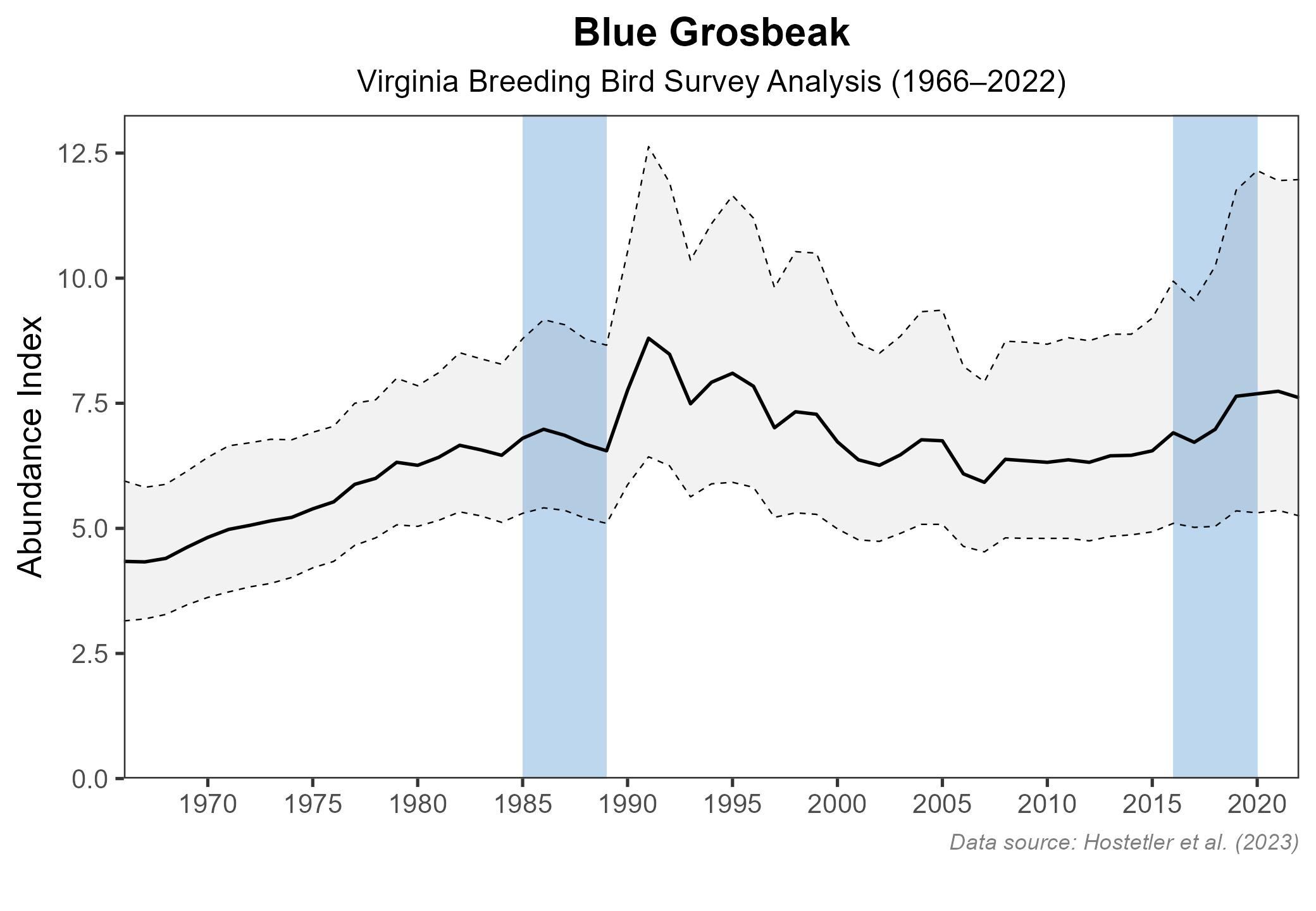
Figure 8: Blue Grosbeak population trend for Virginia as estimated by the North American Breeding Bird Survey. The vertical axis shows species abundance; the horizontal axis shows the year. The solid line indicates the estimated population trend; there is a 97.5% probability that the true population trend falls between the dashed lines. The shaded bars indicate the First and Second Atlas periods.
Conservation
Blue Grosbeaks are stable in the state, especially in the Piedmont and Coastal Plain regions. They are not considered a species of specific concern (Lowther and Ingold 2020). No specific conservation projects are underway in Virginia; however, conservation targeted at other early successional and grassland species will also benefit the species.
Interactive Map
The interactive map contains up to six Atlas layers (probability of occurrence for the First and Second Atlases, change in probability of occurrence between Atlases, breeding evidence for the First and Second Atlases, and abundance for the Second Atlas) that can be viewed one at a time. To view an Atlas map layer, mouse over the layer box in the upper left. County lines and physiographic regional boundaries (Mountains and Valleys, Piedmont, and Coastal Plain) can be turned on and off by checking or unchecking the box below the layer box. Within the map window, users can hover on a block to see its value for each layer and pan and zoom to see roads, towns, and other features of interest that are visible beneath a selected layer.
View Interactive Map in Full Screen
References
Lowther, P. E., and J. L. Ingold (2020). Blue Grosbeak (Passerina caerulea), version 1.0. In Birds of the World (A. F. Poole, Editor). Cornell Lab of Ornithology, Ithaca, NY, USA. https://doi.org/10.2173/bow.blugrb1.01
Hostetler, J. A., J. R. Sauer, J. E. Hines, D. Ziolkowski, and M. Lutmerding (2023). The North American breeding bird survey, analysis results 1966–2022. U.S. Geological Survey, Laurel, MD, USA. https://doi.org/10.5066/P9SC7T11.

